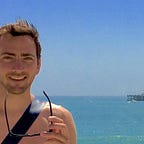Visualizing the Profound Fury of Wildfires in Satellite Imagery
Wildfires tear through dry landscapes at breakneck speeds — faster than most people can run — and pivot direction at a moment’s notice by changes in wind or land topology. Recognizing scope of the fire, the surrounding fire fuel, and communicating notifications to evacuate are matters of life and safety.
Natural color satellite imagery of wildfires capture the massive smoke plumes as the early fires burn. This image from the day of the Paradise Camp Fire in CA on November 8th, 2018, shows how rapidly smoke plumes can begin to fill the region. The Camp Fire was the most destructive wildfire in California history. It is named after Camp Creek Road where it started in Pulga, CA.
Beyond RGB Natural Color
Like most satellites, the LandSat 8 satellite cameras and sensors capture images in more more colors than the RGB of handheld cameras, extending further into the bluer Ultraviolet and redder Infrared and Thermal than we can see with our eyes. These sensors carry important information about the landscape, but must be visually rendered in some false way for us to see them.
Near Infrared and Short Wave Infrared can penetrate through smoke, allowing us to see the visible burn scars, where wildfire has left behind charred terrain as it has moved. Combining the natural color image with lightly processed Infrared data highlight orange-red arcs of high intensity temperature regions indicating possible fires. These areas align with where the smoke plumes originate, on the perimeter, allowing to see these possible fires and the visible burns scars left behind on the inner smoke plumes.
The Starlight Aether SDK (docs) is a tool analysts use to access and process satellite data. To visualize the Paradise Camp Fire, I have written a simple application in Aether that collects LandSat imagery of all sensor bands and processes them using a semi-automated color rendering algorithm developed by Pierre Markuse. Pierre specializes in visualizing observable features of wildfires.
The Starlight Aether code to render these images is in Github and Github Gist.
Use the Aether SDK as part of the Starlight Network
This link will having you downloading satellite data in less than 15 minutes.
Epilogue: Impact of the Paradise Camp Fires
The Camp Fire was discovered before sunrise on Thursday, November 8, 2018. It was first reported by a Pacific Gas and Electric Company (PG&E) Rock Creek Powerhouse worker. PG&E had notified customers prior that it might shut down power due to a forecast of high winds and low humidity.
However, ultimately, PG&E did not.
The Camp Fire was the most destructive wildfire in history. Total damage was $16.5 billion; one-quarter of the damage, $4 billion, was not insured.
The fire covered an area over 153,000 acres and destroyed 19,000 structures, with most of the damage occurring within the first four hours.
The fire reached 100 percent containment after seventeen days on November 25, 2018.
Investigators believe that the failure of a badly maintained PG&E steel hook holding up a high voltage line was a key cause of the fire. Facing potential liabilities of $30 billion from the wildfire, PG&E began the process of filing for bankruptcy with a 15-day notice of intention to file on January 14, 2019.
Get to know us. Starlight.
David Bernat is founder and president/CEO of Starlight, a company dedicated to innovating intersectional technology with satellites and AI. Dr. Bernat is a Space Scientist and former small fry on the Goldman Sachs strategies desk.
Use the Aether SDK as part of the Starlight Network
This link will having you downloading satellite data in less than 15 minutes.
